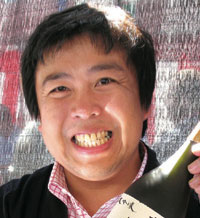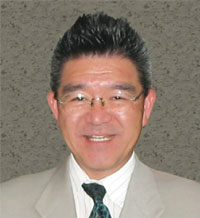Pay attention to identify “2 different aromas” during sake tasting
Pay attention to identify “2 different aromas” during sake tasting
Two types of aromas below must be evaluated during sake-tasting. Aroma is an essential element that characterizes the uniqueness of each sake, thus please evaluate thoroughly.
*Orthonasal aroma: Odor detected from the nose when inhaled
Aroma detected when sake is poured into the glass and brought close to the nose. For example, Ginjo sake releases a fruity Ginjo aroma and flavor. If oxidized (degraded), a “stale odor” (“hineka”) may be detected.
Aroma detected when sake is poured into the glass and brought close to the nose. For example, Ginjo sake releases a fruity Ginjo aroma and flavor. If oxidized (degraded), a “stale odor” (“hineka”) may be detected.
*Retronasal aroma: Aroma that reaches the nose through the mouth
Aroma detected after a small quantity of sake is swished over the tongue and exhaling through the nose, also referred to as “in-mouth aroma” or “after flavor.” If the retronasal aroma is comparable to the orthonasal aroma, then the sake aroma is well-balanced.
Aroma detected after a small quantity of sake is swished over the tongue and exhaling through the nose, also referred to as “in-mouth aroma” or “after flavor.” If the retronasal aroma is comparable to the orthonasal aroma, then the sake aroma is well-balanced.
日本酒のテイスティングでは、「2つの香り」の違いに注目
日本酒をテイスティングするときに確認する香りは、以下の2種類です。香りは日本酒の個性を特徴づける要素なので、しっかり確認してみましょう。
◇上立ち香(うわだちか)
日本酒をグラスに注ぎ、鼻を近づけたときに感じる香り。たとえば、吟醸酒からは、フルーティーな吟醸香が感じられます。酸化(劣化)している場合は、「老香(ひねか)」という不快な香りを感じ取れます。
◇含み香(ふくみか)
日本酒を少量口に含んで舌の上で転がし、鼻から息を出すときに感じられる香り。「口中香(こうちゅうか)」や「アフターフレーバー」ともいいます。上立ち香とほとんど変わりがなければ、バランスのとれたお酒ということになります。




